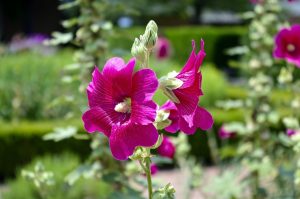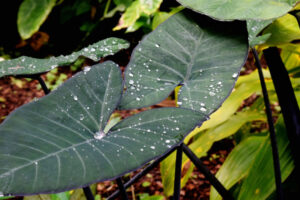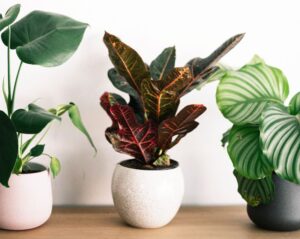Creating a vibrant shade garden can be a delightful challenge. Many gardeners anticipate lush green foliage, but injecting color into those shadier nooks can transform your landscape into a dazzling spectacle. Colorful shade perennials are a perfect way to add vibrant hues and unique textures that enhance the beauty of your garden.
Each plant offers its distinct characteristics, requiring varied care and conditions, but they all contribute to a lush, colorful display. Let’s dig into the world of these shade-loving perennials!
Hosta
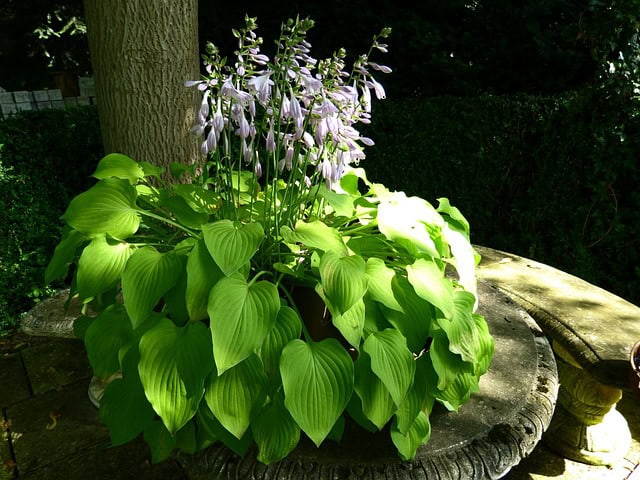
When it comes to shade-loving perennials, Hostas reign supreme. Known for their striking foliage, these plants exhibit a variety of leaf shapes, sizes, and colors, ranging from deep greens to vibrant blues and golds. Some even have white or cream margins creating stunning contrasts.
Care & Planting: Hostas thrive in well-drained soil rich in organic matter. They prefer partial to full shade but can tolerate some morning sun. Planting Hostas in groups can create a dramatic effect, especially in the foreground of a garden bed.
Varieties: Consider ‘Patriot’ for its bold white edges or ‘Blue Mouse Ears’ for a more compact option.
Benefits: Not only do Hostas provide color, but they are also deer-resistant, making them an excellent choice for wildlife-heavy areas.
Astilbe

Astilbe brings a burst of color through fluffy plumes that can bloom in shades of pink, red, white, and purple. These perennial delights add texture and height to shady gardens, often making them the focal point of a flower bed.
Care & Planting: Preferring moist, well-draining soil, Astilbe enjoys partial to full shade. They can thrive near ponds or in consistently damp areas. It’s advisable to mulch them to conserve moisture.
Varieties: ‘Fanal’ sports a vivid red hue, while ‘White Gloria’ showcases pristine white blossoms that stand out against lush green foliage.
Benefits: Their long-lasting blooms not only attract pollinators but also serve as excellent cut flowers.
Bleeding Heart (Dicentra)
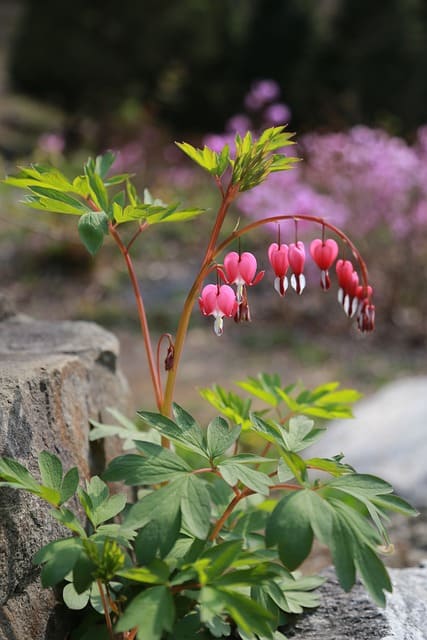
Bleeding Heart is perhaps one of the most whimsical additions to a shade garden. With its heart-shaped flowers dangling from arching stems, this perennial is adored for its unique appearance.
Care & Planting: Bleeding Hearts flourish in well-drained soil that retains moisture. They prefer partial to full shade, typically thriving under deciduous trees.
Varieties: ‘Alba’ offers lovely white flowers that contrast beautifully with the green foliage, while ‘King of Hearts’ is a compact variety suitable for smaller spaces.
Benefits: Their unique blooms are enchanting and make for an excellent conversation starter in any garden.
Lungwort (Pulmonaria)

Lungwort is one of the earliest bloomers in spring, offering spotted leaves alongside delicate blue, pink, or white flowers. Known for its disease-resistant qualities, this hardy perennial brings elegance to shady spots.
Care & Planting: It prefers moist, well-drained soil in partial to full shade, thriving under trees or large shrubs. Lungwort tolerates dry conditions better than most other shade plants, making it a versatile choice.
Varieties: ‘Spilled Milk’ features white-spotted leaves, creating a striking combination with its pastel flowers, while ‘Blue Ensign’ is notable for its bright blue blooms.
Benefits: Besides being aesthetically pleasing, Lungwort serves as an excellent ground cover, preventing weeds from establishing in your shade garden.
Coral Bells (Heuchera)
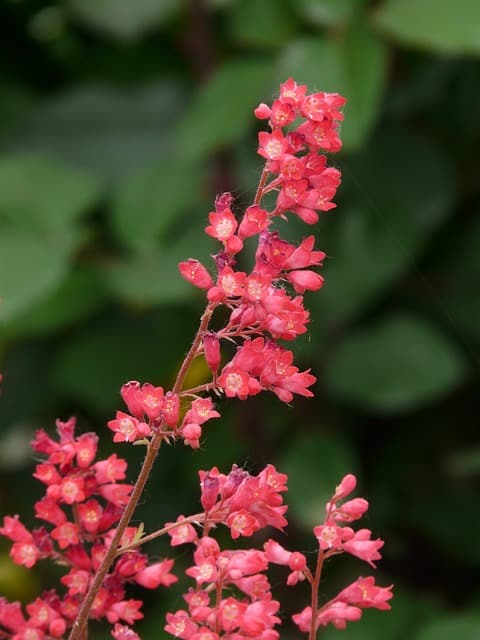
Coral Bells, known for their colorful foliage, are the stars when it comes to diversity in leaf color. Ranging from deep purples and vibrant reds to bright greens, their attractive leaves are as beautiful as their flower stalks, which bloom delicate bell-shaped flowers.
Care & Planting: These plants prefer well-drained soil and can tolerate a variety of light conditions, although they thrive best in partial shade. Regular watering helps maintain their robust colors.
Varieties: ‘Caramel’ and ‘Palace Purple’ are popular choices to add contrasting colors to your garden.
Benefits: Coral Bells are highly adored for their ability to attract hummingbirds, making your garden lively with activity.
Brunnera (Brunnera macrophylla)
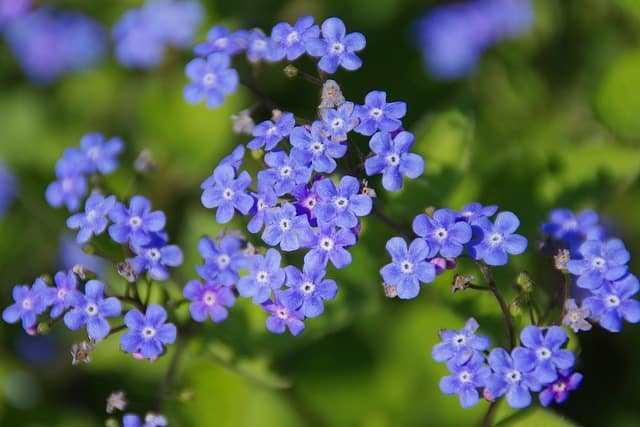
Often dubbed as “false forget-me-nots,” Brunnera captivates with its silvery leaves and charming blue flowers. These perennials can bloom in early spring, brightening up the usual shades of green.
Care & Planting: They thrive in moist, fertile soil and prefer partial to full shade. Brunneras can tolerate some sunlight but will flourish in shadier spots.
Varieties: ‘Jack Frost’ offers stunning silvery leaves with green veins, and its blue flowers are a delightful addition to any shade garden.
Benefits: Brunneras expand beautifully, effectively covering bare ground while adding vibrant patches of color.
Lenten Rose (Helleborus)
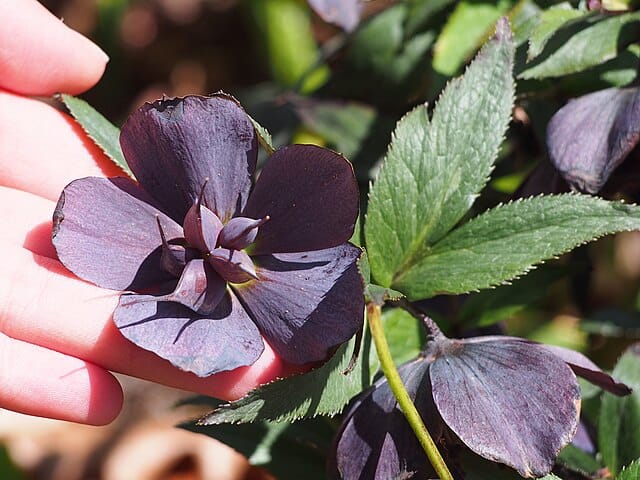
As one of the first perennials to bloom after winter, the Lenten Rose comes alive with its nodding flowers in shades of pink, purple, and cream. This stunning plant ushers in spring with its resilient spirit and adds color long before most other plants awaken.
Care & Planting: It prefers well-draining soil and thrives in partial to full shade. Lenten Roses are tolerant of drought once established, making them low-maintenance additions to your garden.
Varieties: ‘Winter Jewel’ series offers a range of colors and will mesmerize you with their enduring beauty.
Benefits: Lenten Roses can bloom for several months, providing vital early-season nectar for bees and other pollinators.
Japanese Forest Grass (Hakonechloa)
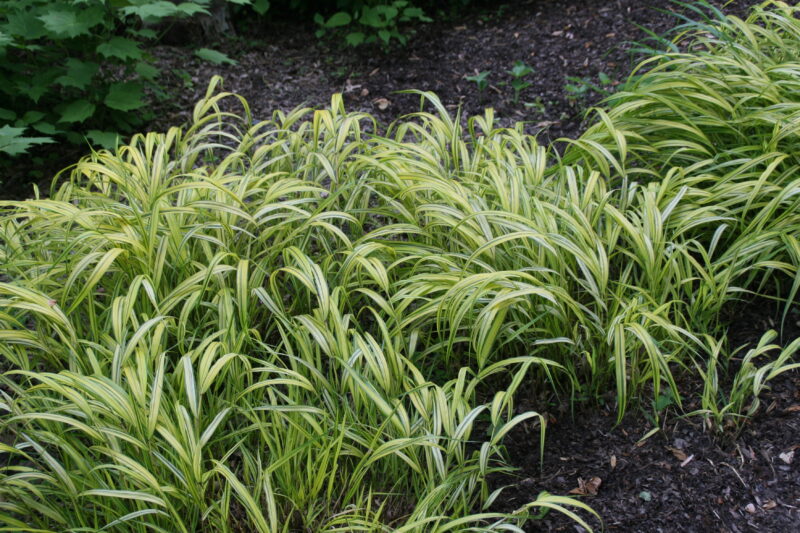
Japanese Forest Grass is a graceful ornamental grass that adds movement and a touch of elegance to shady areas. Its arching habit creates a beautiful cascading effect, particularly when paired with other perennials.
Care & Planting: Hakonechloa prefers rich, well-drained soil, doing well in partial to full shade. Regular water helps maintain its lush appearance.
Varieties: ‘Aureola’ showcases striking golden-yellow foliage, while ‘Albo-marginata’ features white-striped leaves that brighten up darker areas.
Benefits: This grass adds texture and color throughout the growing season and offers a stunning contrast to broader-leafed plants.
Solomon’s Seal (Polygonatum)
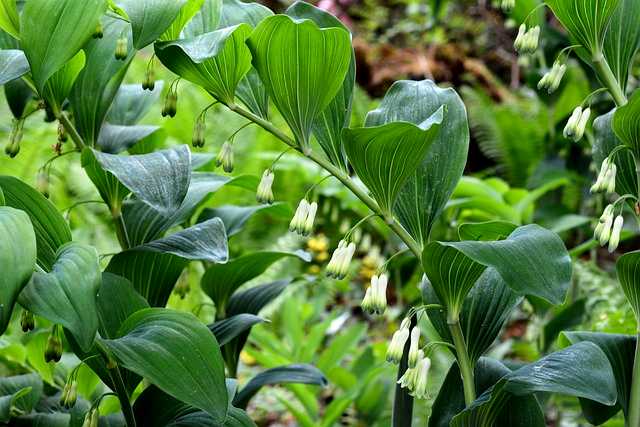
Solomon’s Seal offers arching stems adorned with hanging tubular white flowers in spring. Its elegant, nodding blooms add a unique architectural element to gardens while providing a splash of interest.
Care & Planting: Preferring moist, well-drained soil, Solomon’s Seal is best suited to partial to full shade conditions. A layer of mulch can help retain soil moisture.
Varieties: ‘Variegatum’ features beautiful white-edged leaves and is favored for its attractive foliage.
Benefits: This perennial offers seasonal beauty with both grazing deer and a variety of insects largely uninterested in it.
Foamflower (Tiarella)
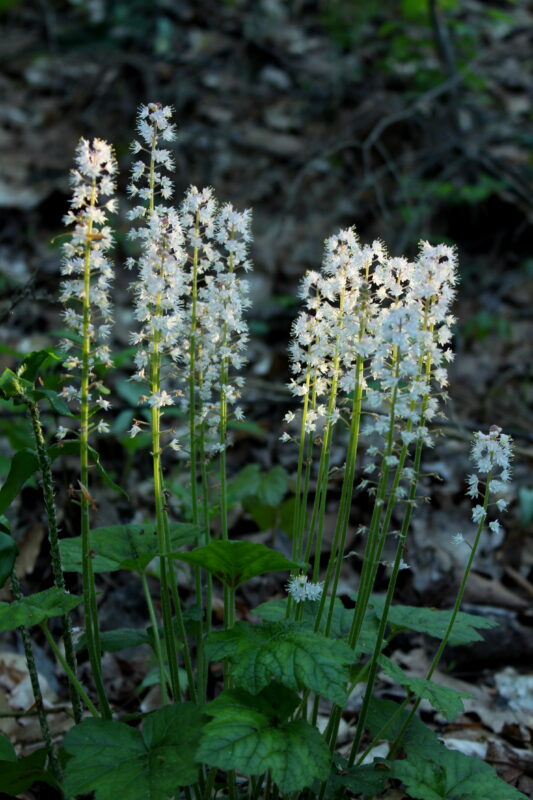
Foamflower stands out for its charming, fluffy spikes of white or pink flowers that rise above its fern-like foliage. It’s a splendid ground cover that ushers life into shady spots.
Care & Planting: Foamflower prefers fertile, moist soil in partial shade. It’s beneficial to provide some compost during planting to support healthy growth.
Varieties: ‘Scentsation’ is notable for its fragrant flowers, while ‘Spring Symphony’ showcases both colorful blooms and stunning foliage.
Benefits: Foamflower attracts pollinators and provides an excellent ground cover, preventing weeds while adding visual appeal.
Toad Lily (Tricyrtis)
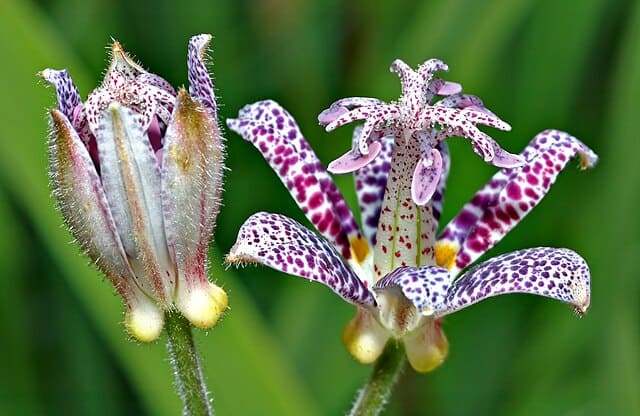
If you’re searching for a unique plant with an exotic flair, look no further than Toad Lily. Its unusual spotted blooms add interest and are a surprising delight in the garden.
Care & Planting: Toad Lilies thrive in well-drained, moist soil and prefer partial shade. They make excellent companions for other shade-loving plants.
Varieties: ‘Tiger’ is popular for its striking spots, while ‘Blue Wonder’ offers pure blue flowers that elegantly contrast the foliage.
Benefits: Toad Lilies are relatively pest-resistant and can provide blooms late in the season when color is scarce.
Goat’s Beard (Aruncus)
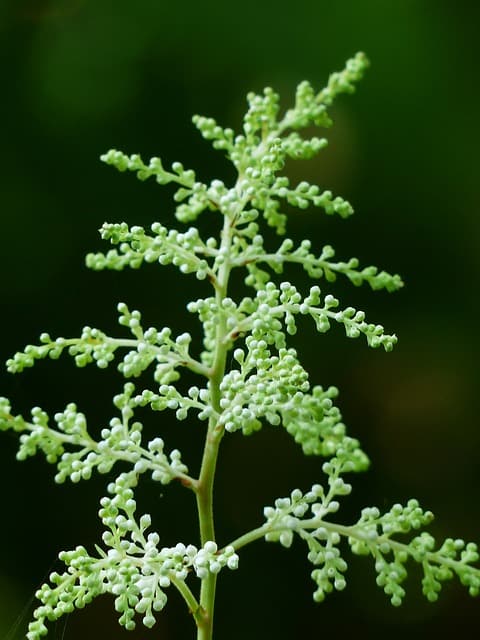
Goat’s Beard is an impressive perennial that resembles a feathery plume. Its airy texture and tall stature make it an excellent backdrop in a garden, providing both height and elegance.
Care & Planting: It thrives in rich, well-drained soil with consistent moisture. Plant in partial shade for best results; full sun can be too harsh.
Varieties: ‘Kniesee’ is a compact version perfect for smaller gardens, while the species can reach up to 6 feet tall when in bloom.
Benefits: Goat’s Beard is both beautiful and functional. It attracts pollinators and wildlife, making your garden a lively ecosystem.
Bugleweed (Ajuga)
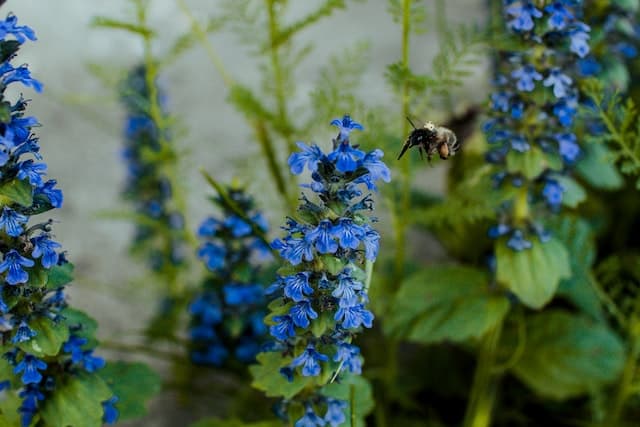
Bugleweed is a hardy perennial with carpet-like ground cover and bold blue flowers. Its dense foliage is ideal for filling in gaps in shady areas while providing a pop of color during flowering.
Care & Planting: This plant prefers moist, well-drained soil and can tolerate both sun and shade. Bugleweed is drought-tolerant once established, making it easy to care for.
Varieties: ‘Chocolate Chip’ has dark foliage with beautiful blue flowers that shine against it, while ‘Burgundy Glow’ features variegated leaves that add interest.
Benefits: Bugleweed establishes quickly and can reduce both soil erosion and weed growth.
Virginia Bluebells (Mertensia virginica)
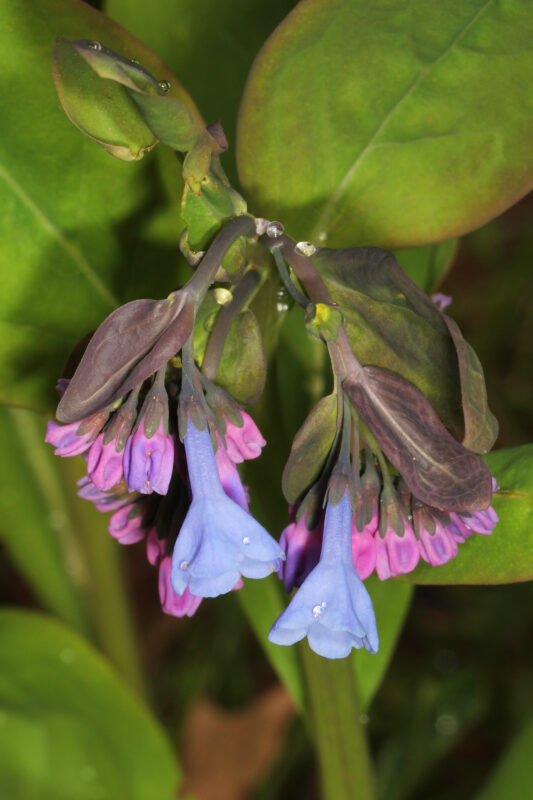
Virginia Bluebells are enchanting during springtime with their clusters of bell-shaped flowers in shades of blue. As they bloom, the foliage emerges in tender green, creating a stunning sight in shaded woodlands.
Care & Planting: Preferring rich, well-drained soil paired with partial shade, Bluebells thrive in moist environments.
Varieties: While Virginia Bluebells typically do not have many cultivars, their genetic variations can produce different shades of blue flowers.
Benefits: They naturalize beautifully and provide essential early spring nectar to pollinators, making them a fantastic choice for enhancing biodiversity.
Lady’s Mantle (Alchemilla mollis)
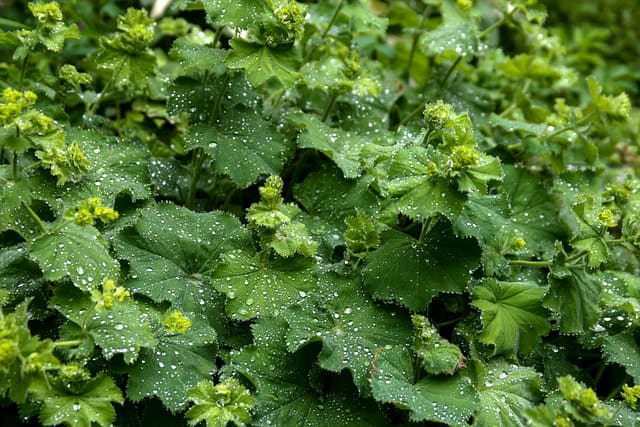
Lady’s Mantle is cherished for its round, scalloped leaves that catch droplets of water, creating a stunning effect in gardens. In addition to its unique leaf shape, it produces delicate yellow-green flowers that add to its charm.
Care & Planting: Thriving in well-drained soil, Lady’s Mantle requires partial to full shade for optimal growth. It’s quite drought-resistant once established, making it a great low-maintenance perennial.
Varieties: ‘Angelonia’ offers striking foliage and charming flower spikes, while standard varieties provide the classic rounded leaf form.
Benefits: This perennial can self-seed, filling your garden naturally, while providing both texture and color.
False Spirea (Astilboides tabularis)
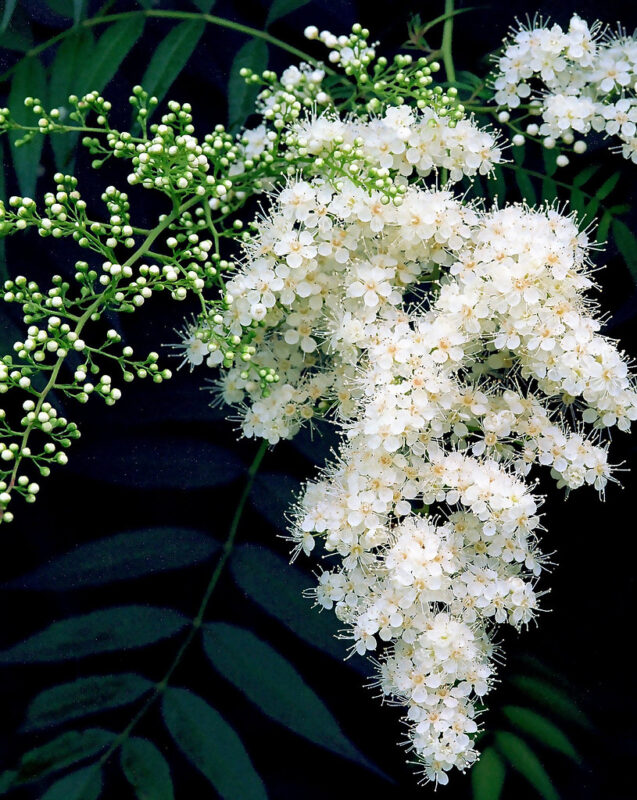
False Spirea may not be as commonly known, but it deserves a special place in your shade garden. This perennial features large, round leaves that create an impressive backdrop for other flowers while its white feathery plumes of bloom contrast beautifully with the foliage.
Care & Planting: Preferring rich, moist, well-drained soil, this plant thrives in partial to full shade. Mulching helps retain moisture.
Varieties: The species itself is often the main option, with its striking leaves and beautiful flowering effect during the summer.
Benefits: False Spirea is quite hardy and can withstand various growing conditions, making it a reliable choice for many gardeners.
Columbine (Aquilegia)
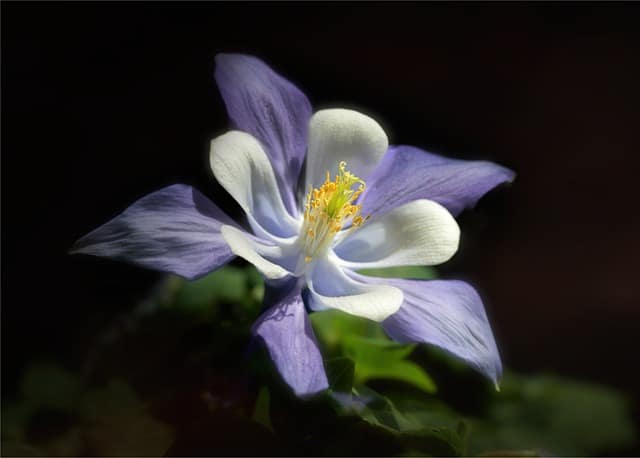
Columbine is a perennial bursting with personality! Its unique, spurred flowers come in myriad colors, often mixing and matching to create eye-catching compositions that stand out in any shady area.
Care & Planting: These plants thrive in well-drained soil and are best planted in partial shade. They are tolerant of varying conditions, making them versatile in the garden.
Varieties: ‘Blue Barlow’ features rich blue double flowers, while ‘Winky Red and White’ showcases playful color combinations that will surely delight.
Benefits: Columbine is a magnet for hummingbirds and butterflies, enhancing the allure of your garden.
Ferns
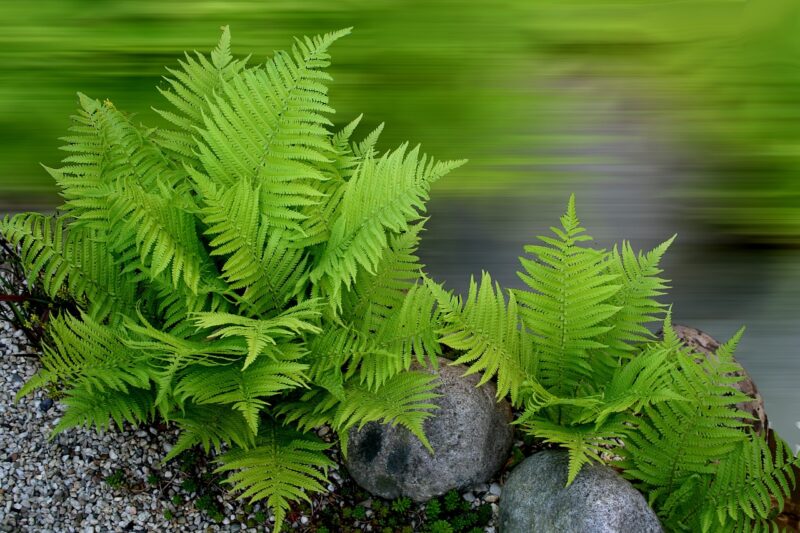
No shade garden is complete without ferns, as they provide an array of textures from delicate to bold. Their lush, green fronds create a soft, natural carpet, accentuating other flowering perennials beautifully.
Care & Planting: Ferns prefer moist, well-drained soil and thrive in dappled sunlight or full shade. Regular watering will help maintain their vibrant appearance.
Varieties: Consider the elegant Maidenhair Fern or the robust Ostrich Fern for a diverse collection.
Benefits: Ferns are resilient plants, often thriving in less-than-ideal conditions, which adds to their appeal as low-maintenance companions in a shade garden.
Foxglove (Digitalis purpurea)
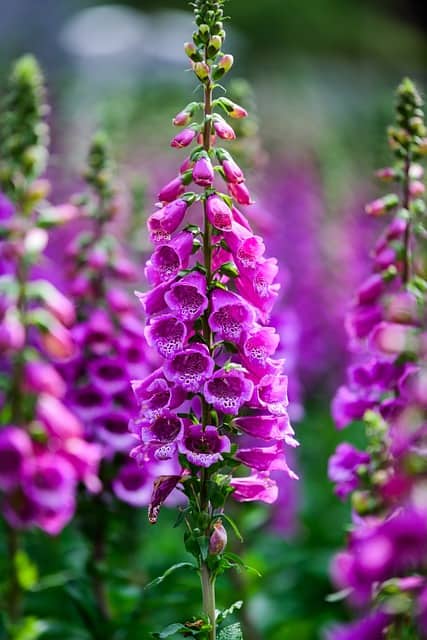
Foxglove boasts tall, towering spikes adorned with tubular flowers that come in various shades of purple, pink, and white. Their impressive height and vibrancy can create dramatic vertical elements in a shade garden.
Care & Planting: Preferring well-drained soil, Foxglove thrives in partial shade. They’re biennial or short-lived perennials, so planting in groups is advisable for continual blooms.
Varieties: ‘Pam’s Choice’ provides a stunning deep purple hue, while ‘Snow Thimbles’ showcases pristine white blooms.
Benefits: Foxglove attracts bees and other pollinators while also adding an enchanting, whimsical feel to any shade space.
Creeping Jenny (Lysimachia nummularia)
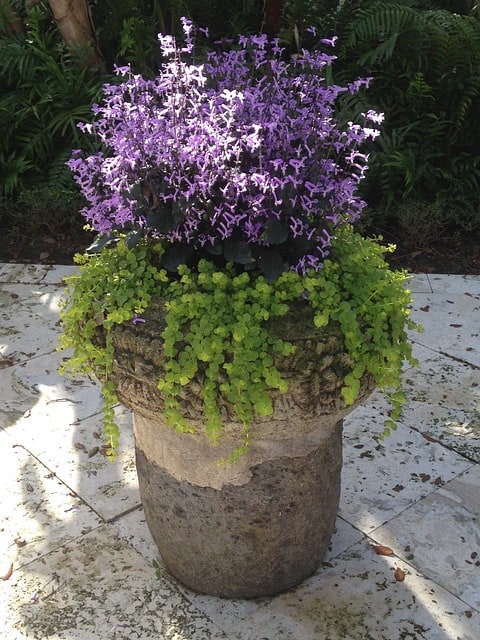
Creeping Jenny is a low-growing perennial that carpets the ground with vibrant yellow-green foliage, making it an excellent choice for shady areas or between stones. Its vivid golden hues shine brightly, especially in spring.
Care & Planting: Preferring consistently moist soil, it does best in partial shade. It’s particularly effective along borders or as ground cover.
Varieties: ‘Aurea’ features bright golden leaves, while the species can switch foliage to rich gold in the fall, extending visual interest.
Benefits: Creeping Jenny is excellent for erosion control, retaining soil moisture while adding visual warmth to your garden.
Corydalis
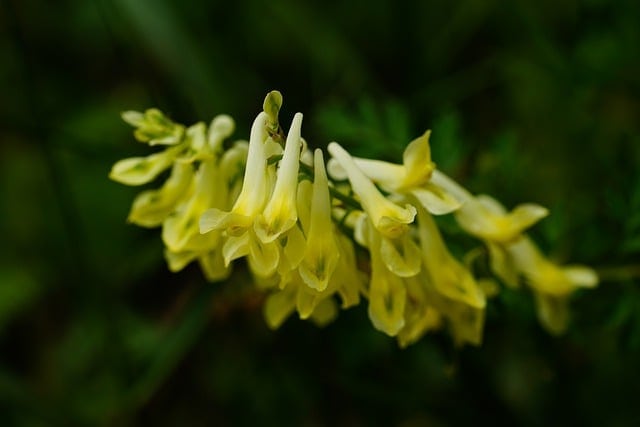
Corydalis is known for its ferny foliage and delicate flowers that resemble tiny snapdragons. Its blooms come in shades of yellow, blue, and purple, providing visual interest throughout the blooming season.
Care & Planting: Preferring partial shade and well-drained soil, Corydalis thrives in moist, rich conditions.
Varieties: ‘Blue Shades’ offers a stunning array of blue hues, making it a favorite amongst gardeners.
Benefits: This perennial is also semi-evergreen, keeping some color in the garden even during winter months, enhancing year-round interest.
Jacob’s Ladder (Polemonium caeruleum)
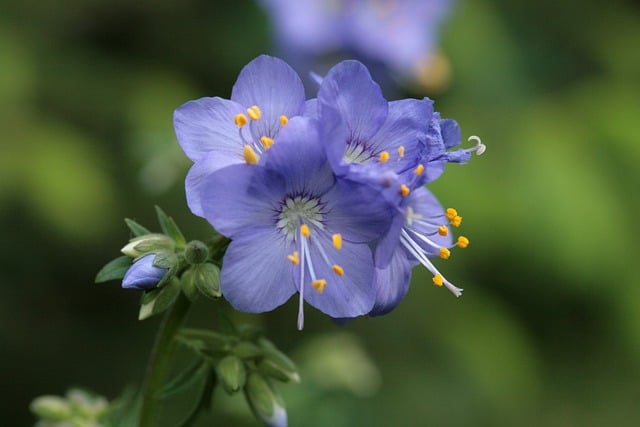
Jacob’s Ladder is a lesser-known perennial appreciated for its unique ladder-like leaf structure and delightful clusters of blue flowers. It brings both novelty and charm to shade gardens.
Care & Planting: It thrives in rich, moist soil and does best in partial to full shade.
Varieties: Animal-friendly varieties like ‘Brise d’Anjou’ feature unique white-tipped foliage alongside lovely blue flowers.
Benefits: Jacob’s Ladder provides continuous blooming throughout the spring, and its leaves are highly attractive for ornamental purposes.
Japanese Anemone (Anemone hupehensis)
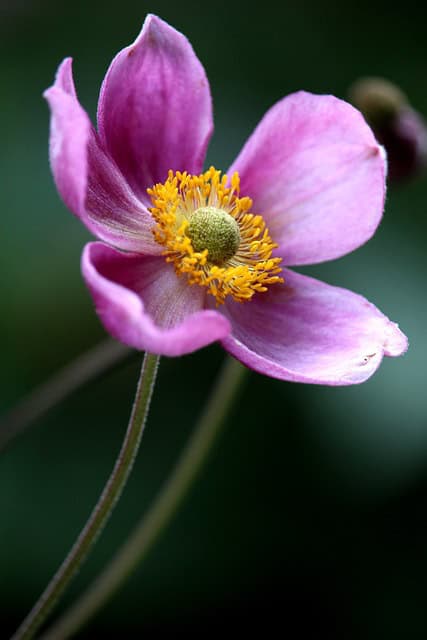
Japanese Anemone presents a graceful array of blooms that sway lightly in the breeze. With striking white or pink flowers appearing late in the growing season, they fill the void when other perennials fade away.
Care & Planting: Preferring well-draining soil, Japanese Anemone thrives in part shade and may benefit from some morning sun.
Varieties: ‘Honorine Jobert’ features beautiful white flowers, while ‘September Charm’ offers lovely pink blooms.
Benefits: These perennials are hardy and serve as excellent cut flowers, brightening indoor spaces.
Celandine Poppy (Stylophorum diphyllum)
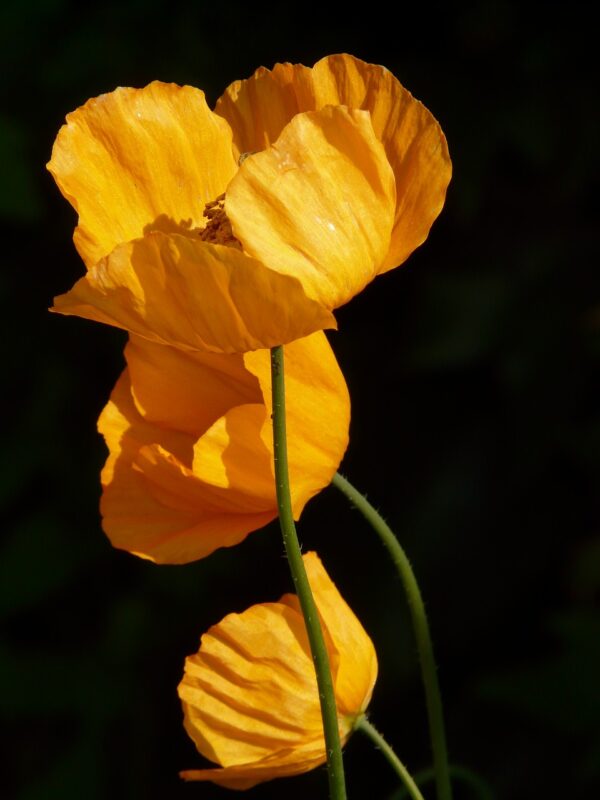
Celandine Poppy is a delicately beautiful perennial with bright yellow flowers that add a cheerful note to shaded areas. Its vibrant blooms are particularly lovely in early spring, capturing the essence of renewal.
Care & Planting: Preferring rich, moist soil, Celandine Poppy thrives best in partial shade with some sunlight.
Varieties: While species varieties are primarily available, their sunny yellow blooms are universally enchanting.
Benefits: They are an excellent naturalizer, creating lovely patches of yellow that can brighten up the shade.
Yellow Archangel (Lamium galeobdolon)

Yellow Archangel adds a unique touch with its bright yellow flowers and attractive variegated leaves. Its growth habit makes it an excellent choice as a ground cover in denser shade gardens.
Care & Planting: Preferring moist, well-drained soil, it thrives in partial to full shade. This plant can handle some sun but typically does best in cooler, shady spots.
Varieties: Variegated forms of Lamium can add dimension to your garden with their unique foliage patterns.
Benefits: Yellow Archangel quickly fills in bare patches, provides year-round interest, and is deer-resistant, ensuring the beauty of your garden remains unscathed.
Sweet Woodruff (Galium odoratum)
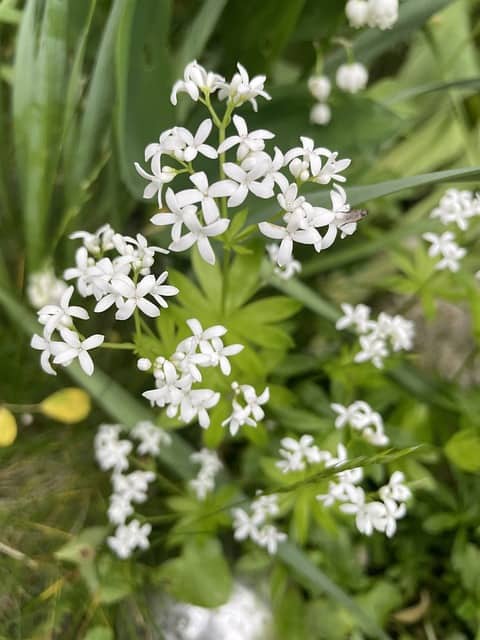
Sweet Woodruff is a perennial that’s as charming as it is fragrant. As it blooms small white star-shaped flowers, its foliage emits a sweet scent reminiscent of freshly cut hay.
Care & Planting: Preferring rich, moist soil, Sweet Woodruff thrives well in partial shade, often found in woodland gardens.
Varieties: The species is widely cultivated, but its charming floral displays are the real stars.
Benefits: This perennial is excellent for ground cover and offers a unique aromatic experience in the garden.
Barrenwort (Epimedium)
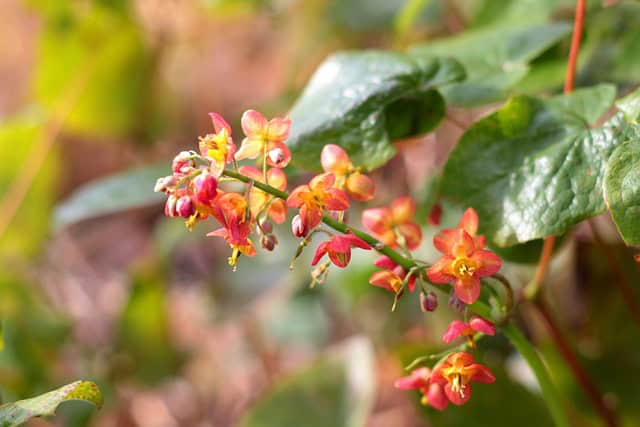
Barrenwort is a tough, adaptable perennial that can thrive in the shadiest spots. Its heart-shaped leaves create a lovely ground cover while delicate blooms appear above in shades of yellow, white, and pink.
Care & Planting: Preferring well-drained, compost-rich soil, Barrenwort thrives in partial shade, particularly under trees where competition is low.
Varieties: ‘Frohnleiten’ is known for its bright yellow flowers, while ‘Sulphureum’ offers delightful pastel shades.
Benefits: This perennial is exceptionally drought-tolerant once established, making it an invaluable addition to low-maintenance gardens.
Elephant Ears Bergenia
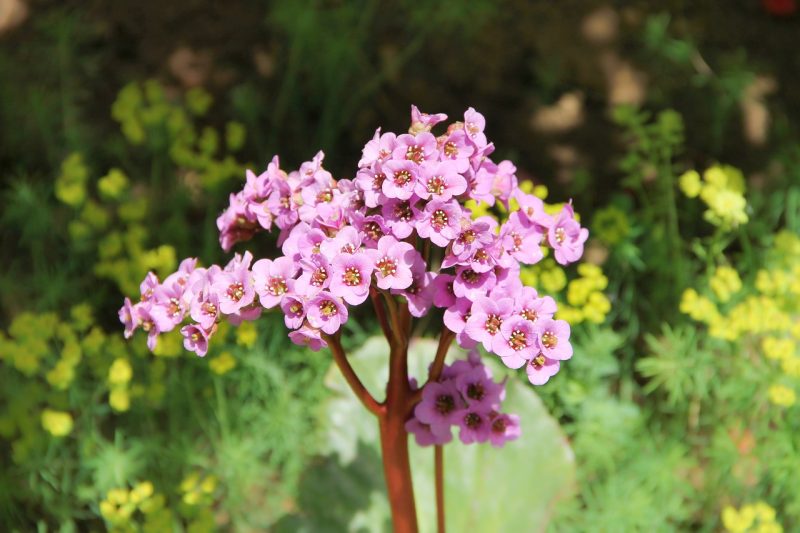
Elephant Ears are known for their bold foliage, resembling large ears and providing a dramatic backdrop for other perennials. Their stunning leaves, available in various shades of green and burgundy, can create striking contrasts.
Care & Planting: Preferring well-drained soil, Elephant Ears thrive in partial to full shade, requiring regular moisture for optimal growth.
Varieties: ‘Bressingham’ is admired for its large leaves and lovely pink flowers that appear in spring.
Benefits: They provide excellent coverage and can set a dramatic tone in any garden, creating a striking visual interest throughout the growing season.



